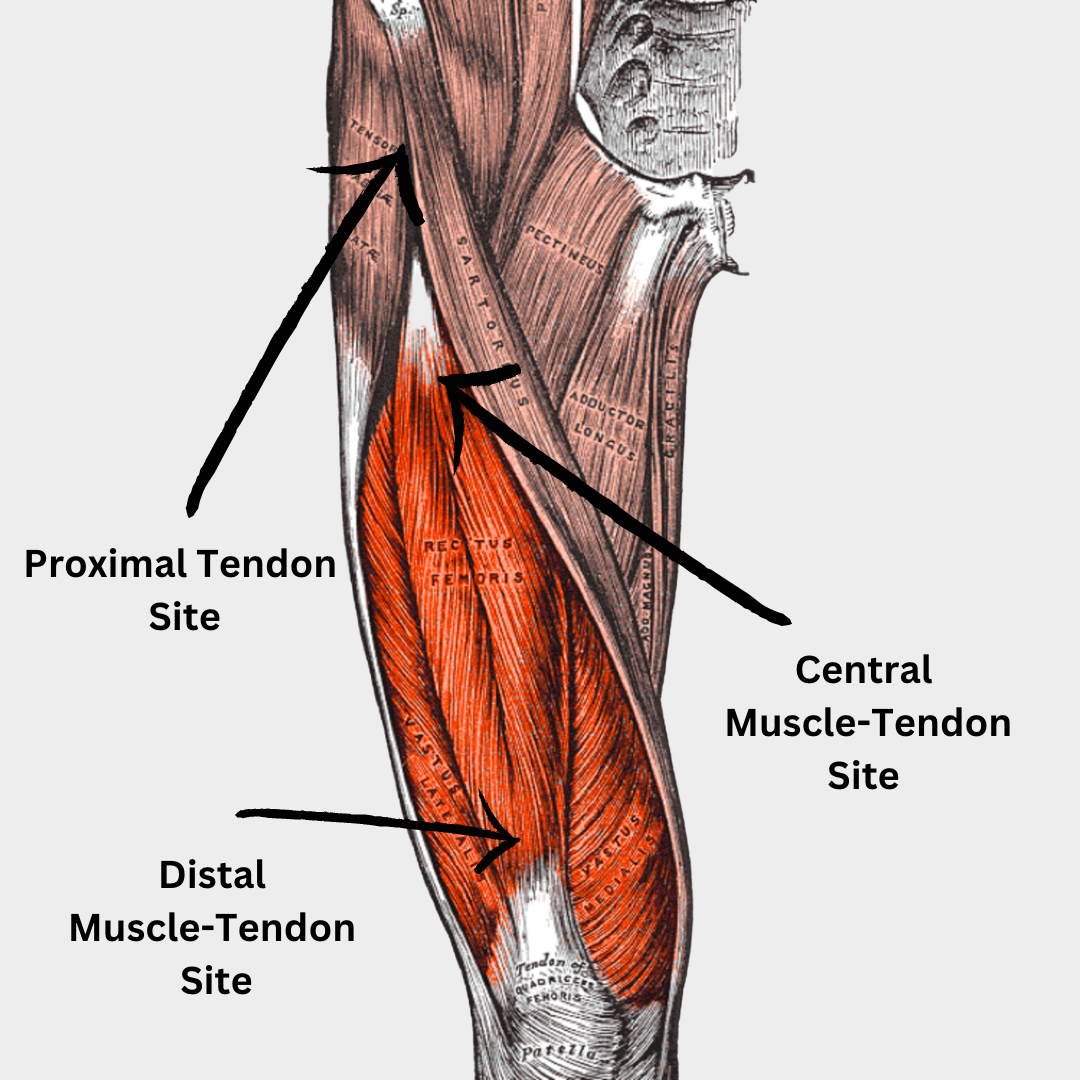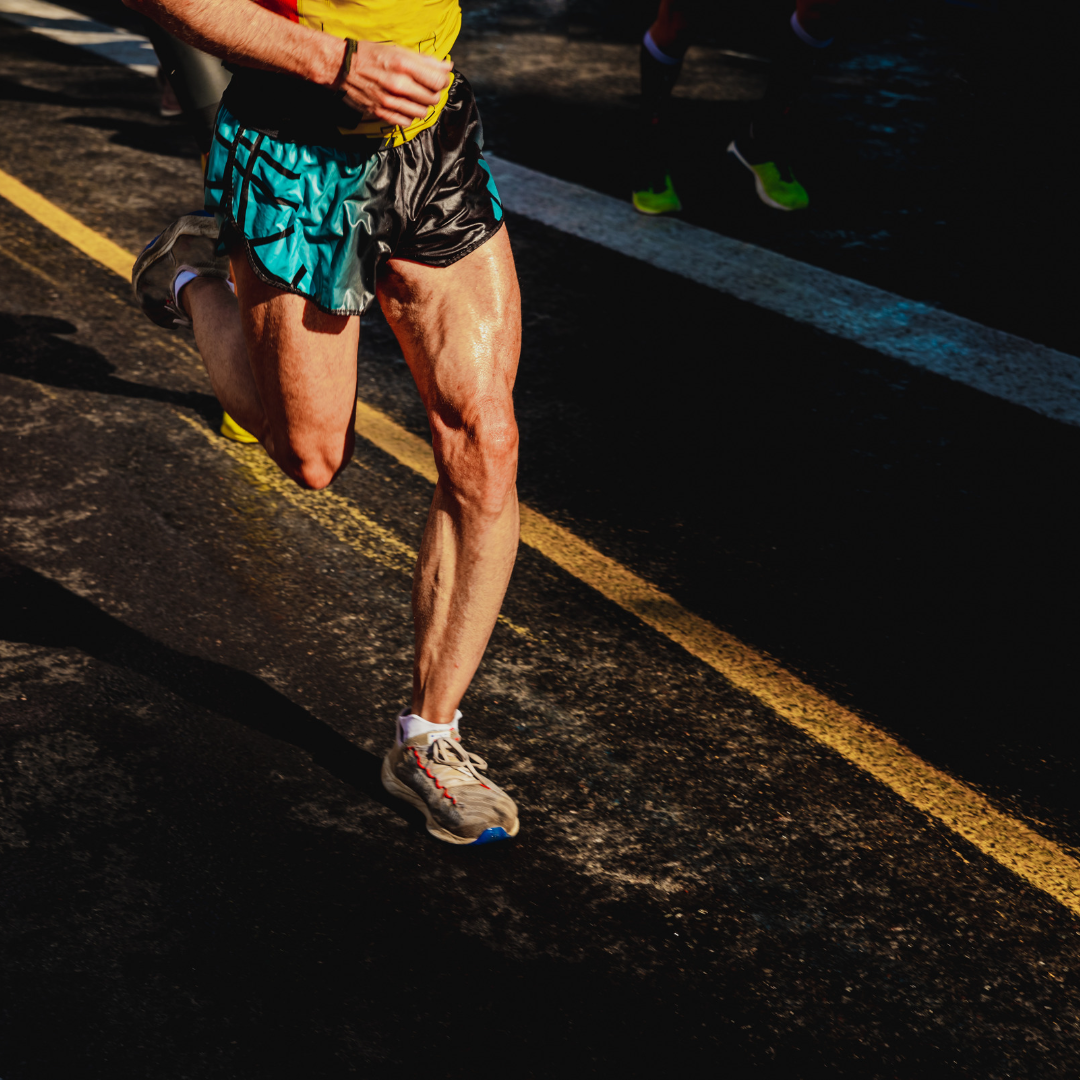Quadricep Strain, Not As Simple As You Would Think….
Injuries to the quadricep muscles are the third most common muscle injury in multi-directional sports. Whilst they are less common than hamstring and groin injury they commonly lead to longer time away from play.
Improper management of quadriceps injury can have serious consequences, ranging from an extended period of time away from sports or other activities, to recurrent injury and the need for surgery. It is therefore vital that injuries that occur to the front of the thigh are screened thoroughly by a competent health care professional.
What Are The Quadricep Muscles ???
The quadricep muscles are a group of 4 muscles which sit on the anterior (front) of the thigh. These muscles are called the rectus femoris, vastus medialis, vastus intermedius and vastus lateralis.
The quadricep muscles is a very important muscle group which has a number of complex functions.
All 4 of the quadricep muscles contribute to extending (straightening) the knee.
Are the main stabilising muscle at the knee when the foot contacts the ground from walking, running, hopping and jumping activities
They function to keep us standing
Contract eccentrically to lower us into squatting and landing positions
Unlike the other 3 quadricep muscles, the rectus femoris originates at two sites at the hip joint, and so plays a role in both flexing the hip (bringing knee towards chest) and stabilising the hip joint.
Quadricep Muscles can be grouped into direct injuries such as contusions (“Corky”) and indirect injuries such as muscle/tendon strains.
This article covers indirect quadricep injuries which are muscle or tendon strain or in severe cases, rupture. Almost all strains occur to the upper or lower rectus femoris muscle.
The rectus femoris is a large, complex muscle. Keeping it as simple as possible, its tendons originate on two sites at the hip and it connects to the quadricep tendon at the knee. The muscle also has a “central tendon” which extends down its body.
Most injuries to the rectus femoris occur to the upper part of the muscle in two different locations. Either close the the origin site at the hip, or close to the “central tendon” approximately 1/3rd of the way down the muscle.
The usual mechanisms for injury as forceful kicking as the rectus femoris has to contract hard whilst being put onto a large stretch, this is more likely to cause an injury close to the central tendon.
Injuries sustained whilst running are more likely to occur close to the tendon origin at the hip, or around the junction between the muscle and tendon at the knee.
In other muscles such as the calf, injuries can occur directly within the muscle belly. In contrast, injuries to the rectus femoris almost always occur either at a tendon site, or at a musculotendinous junction (a site where muscle and tendon converge). Simple low grade strains to the muscles can be managed relatively simply. However, injuries that occur to the tendon or high grade injuries at the musculotendinosus junction are more complex.
Proximal Injuries
Injuries to the tendon site in in the hip require an MRI to establish the severity of injury. Smaller less complex injuries are managed with extensive rehabilitation, however larger grade partial, and full ruptures almost always require surgery if the individual aspires to return to sport.
Injuries in this location don’t always mean a tendon injury….
In teenagers, especially those that play a lot of kicking sports, the powerful rectus femoris can cause an avulsion fracture to occur in the hip. This is where the rectus femoris pulls forcefully on the unfused pelvis, causing a fragment of bone to be pulled off the pelvis. This is more common than you would think and occurs because the growing skeleton is the weak link in the muscle-tendon- bone chain. Thankfully, whilst these injuries can be painful they are managed conservatively, with initial immobilisation, structured re-introduction of weight bearing and rehabilitation.
Central Tendon Injuries
The central tendon plays an important part in a persons ability to kick. It extends along the course of the muscle, working almost like a whip to produce more power.
Injuries that occur to the central tendon are severe and require extensive rehabilitation. Unfortunately if they become recurrent surgery may be required. Injuries further up the tendon are more commonly associated with recurrent problems.
Risk Factors for Quadricep Strain
As with most muscle injuries the biggest risk factor for injury to the quadriceps is…… previous injury to the quadriceps!
Other significant risk factors include
Recent Hamstring injury
Having less experience in chosen sport
Much greater risk in dominant leg
More recent studies have identified that age, weight and flexibility had no association with injury to the quadriceps!



